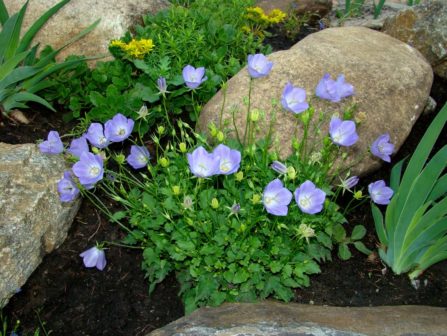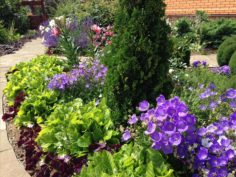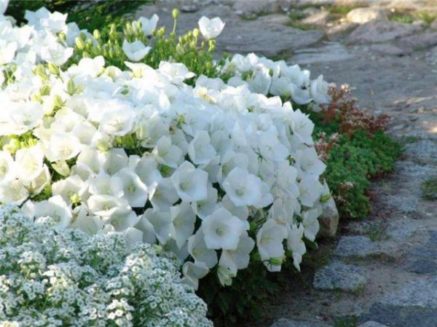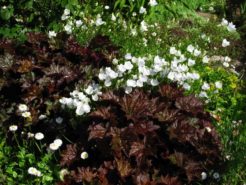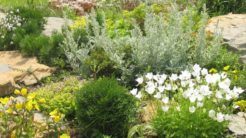Delicate, touching flowers of various colors called "Carpathian bell" refresh the landscape, bloom for a long time and do not require scrupulous care. It sounds tempting to get to know them better.
Material Content:
Botanical Description
Imagine a perennial plant with many thin graceful stems and fragrant funnel-shaped flowers, forming low (20-30 cm) bushes. At the roots, leaves are rounded, collected by a rosette; ovate on stems. The flowers are solitary up to 5 cm in diameter, the cup is open and directed upward, in shape resembles a bell. Botanists did not come up with a complex Latin name for this plant, they left the "bell" given by the people.

The name of the herbaceous plant "Carpathian bell" is due to the wide distribution in the mountains of Eastern and Central Europe, primarily the Carpathians. Treeless sections of Transcarpathia (the so-called meadow), densely covered with bells - an incomparable picture.
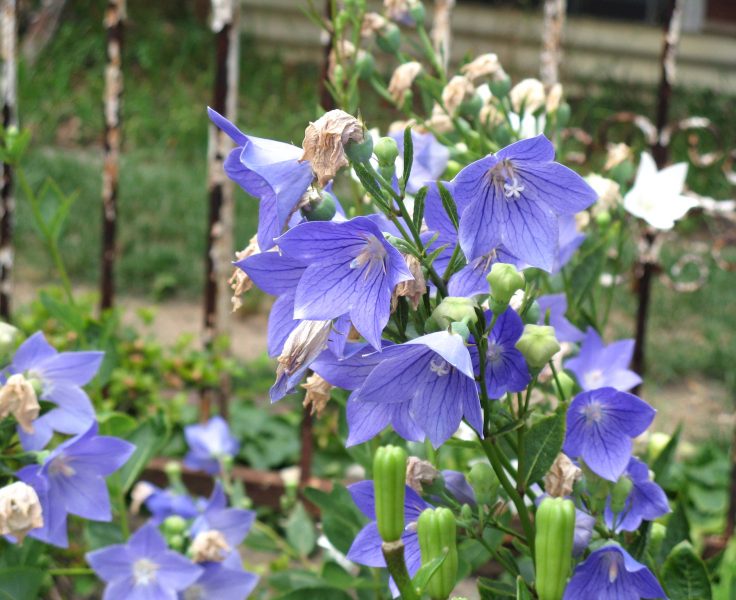
For the first time, the plant was described by the Austrian botanist Nikolaus Jaken. By 1774, it was introduced to the Royal Botanic Gardens - the London-based World Botanical Research Center, which exists to this day.
Today, royal luxury is available to every gardener. The plant is unpretentious, it is enough to take into account only a few nuances.
Varieties and types of plants
Scientists have one and a half hundred species of bell.
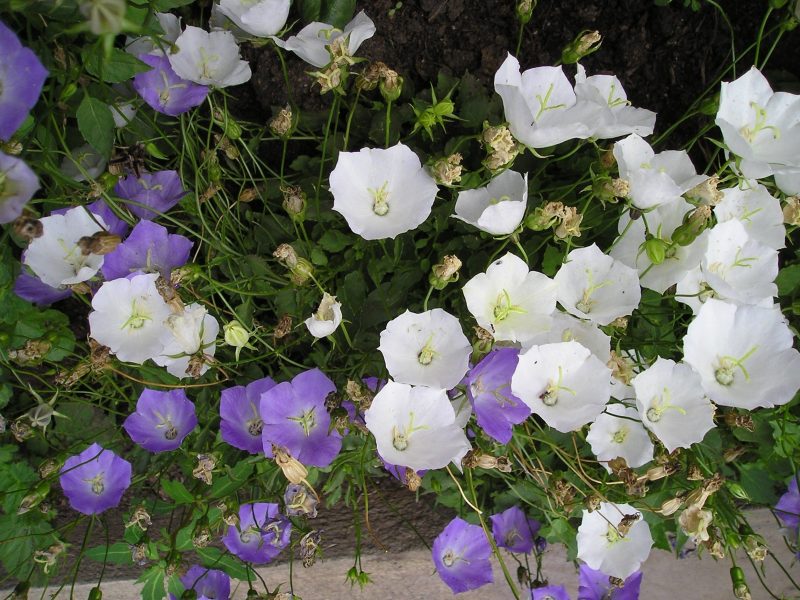
As for the Carpathian, we present the most common varieties that are easy to find:
- with white flowers Carpathian bell: “Dwarf”, “Pearl White”, “Belogorye”, “White Star”, “Alba”;
- blue bell: “Elf”, “Bells”, “Samantha” (with a white center), “Isabelle”, “Spekhmayze”, “Celestine”;
- with blue flowers: “Pearl Blue”, “Blue Clips” (they are also “Clips”), “Blaumaise”, “Riversley”, “Karl Forster”;
- with violet flowers: "Carpatencrone".
Planting and care from grade to grade are virtually the same. Follow the recommendations below and do not forget to read the instructions on the packaging with seeds if you are lucky enough to get a rare variety.
How and when to sow bell Carpathian for seedlings
Growing seedlings should begin in March. Sowing seeds surface, under a transparent cover or glass.
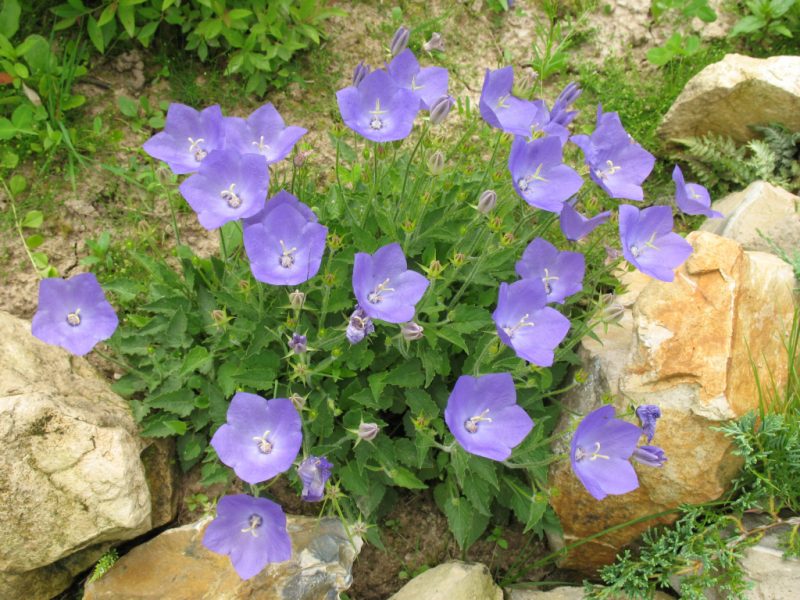
Pay attention to the requirements for the location, it should be:
- light, warm, without drafts;
- with additional light energy-saving or special phytolamps;
- with a constant temperature of at least 20 ℃.
Watering is carried out every 10 days when the soil dries. Shoots appear in two to three weeks. After another week, the seedlings begin to temper little by little: first remove the cover for 10-15 minutes, gradually increasing the time and bringing it up to 2 hours, and then leave it open for the night.
After the appearance of the third leaf, the seedlings are transplanted so that the distance between them is at least 30 cm. Plan for planting seedlings on the plot at the end of May.
Tip. The plant has long roots, so seedlings are best grown in tall pots.
Outdoor grass planting
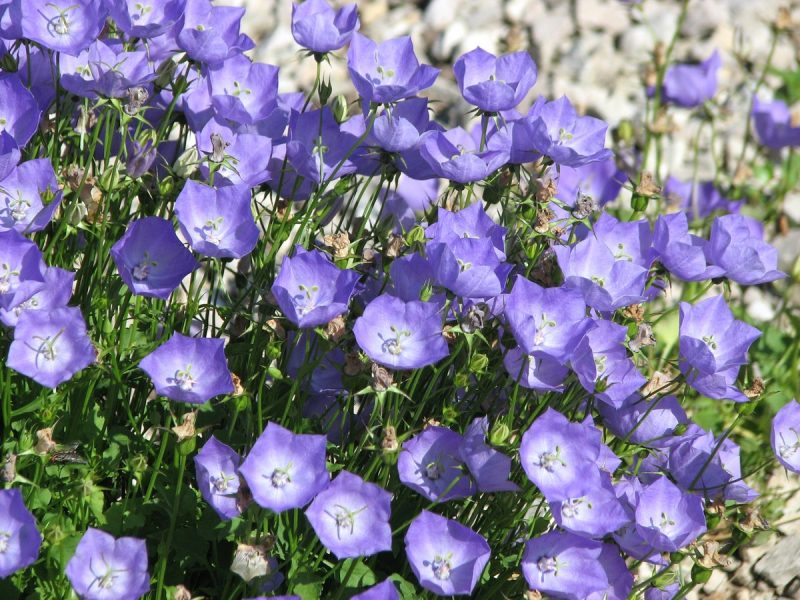
When to plant a bell in the soil:
- Direct sowing of seeds is planted in mid-May in open ground.
- In late April, planting is carried out in a greenhouse.
As for the soil, some nuances should be taken into account:
- choose sunny dry areas or at least partial shade;
- the soil should be fertilized, cleared of weeds;
- loamy alkaline soil provides better growth;
- the structure is preferred soil is light, loose, breathable, well-drained.
Seeds are scattered in grooves with a depth of 1 cm, they do not cover the ground from above. It is necessary to provide daily watering, without bringing to waterlogging. Expect the first shoots in two to three weeks, and sometimes all four.
Agrotechnics of cultivation and care
You will be happy to know how unpretentious the bell is. Watering requires only during intense heat, excess moisture can harm. With drought, the duration of flowering is reduced.
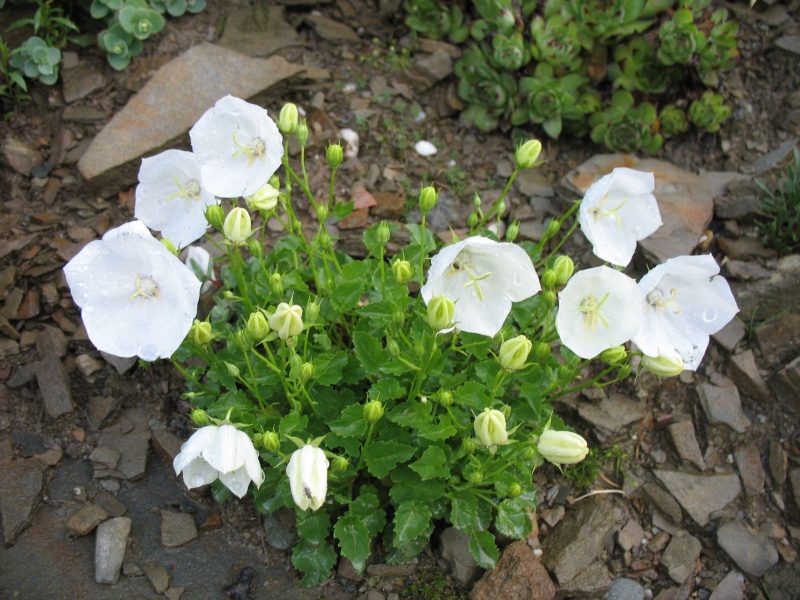
In the period of tying buds, it is good to introduce top dressing.
For these purposes are suitable:
- purchased mineral fertilizers: solutions, granules. When adding liquid fertilizer, it is important not to fall on the leaves;
- herbal compost - you can cook it yourself.
Adult specimens are resistant to adverse conditions, do not require special signs of attention, freeing up a lot of time to care for more sensitive representatives of the dacha flora.
On a note. To extend the flowering period, crop the shoots with old flowers.
Breeding methods

The following methods of propagation of the bell of the Carpathian are possible:
- seeds (bought or collected independently);
- cuttings (before flowering);
- rhizome division (only for mature adult plants older than three years).
Seeds ripen in a box after flowering, that is, in August. Inflorescences are cut off when the boxes become brown.
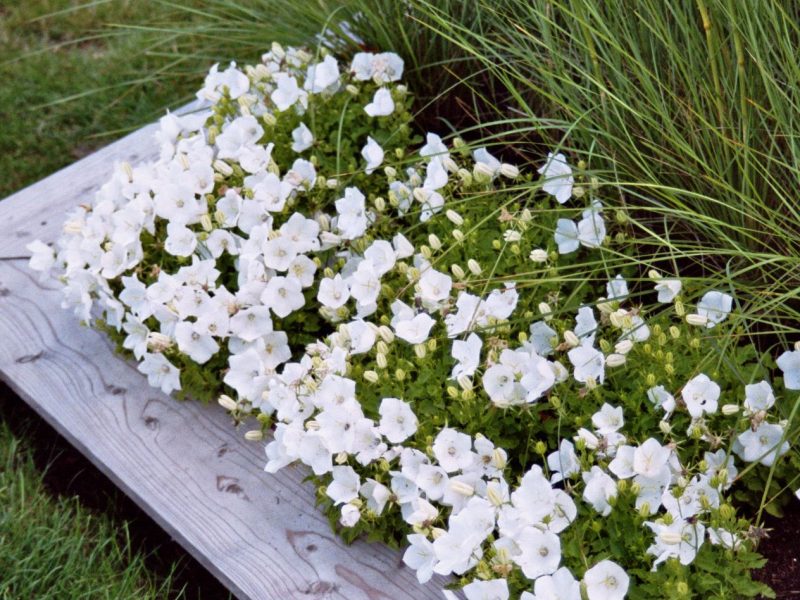
For propagation by cuttings, the stems should be cut so that each has three places of leaf attachment. The resulting cuttings are planted in a pot and taken care of as seedlings. At the end of August, relocate to a flower bed.
To propagate the bell by dividing the rhizome, dig it and cut it into pieces with a knife: one part - one socket. Then you can immediately plant the plant in the garden.
It is interesting: Daisies: planting and care in the open ground
Carpathian bell in landscape design
You can use the plant in the landscape design of the garden plot in the following ways:
- as a decoration for a rocky exposition;
- in the role of a flower border;
- in a group with other plants;
- plant in flowerpots.
Given the fact that the plant comes from a mountainous area, against the background of a small hill, it will look most harmonious. The simplest rock garden can be made by planting a bell among the stones. Try to dilute the composition with other dwarf ornamental plants, mountain ones will look especially good.
A dense row of bells can indicate the borders of the flowerbed. It is good to plant such flowers along paths and low garden fences.
In prefabricated flower beds, successful partners are Dalmatian geranium, heliantemum (hybrid sunflower), saxifrage, juvenile, daisies, lobelia, obriet, lobelia, alissum. It is good to combine different varieties of a bell nearby, for example, white with blue. Or take an example from the wild: in the Carpathian meadows, white and blue beauties are adjacent to arnica, daffodils and gentian. The Carpathian bell can be combined with tall plants, planting it along the edges first row.


